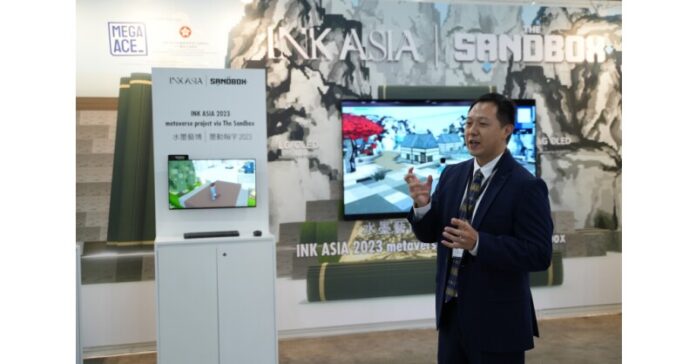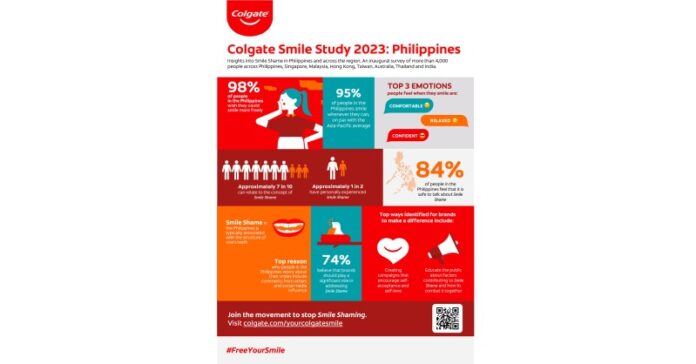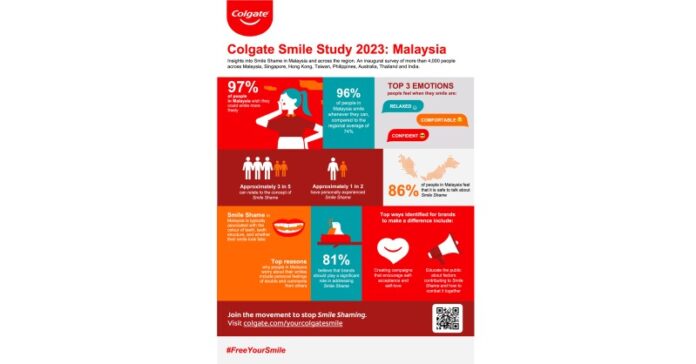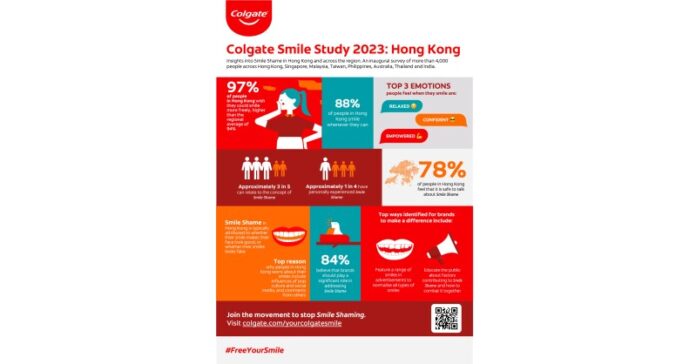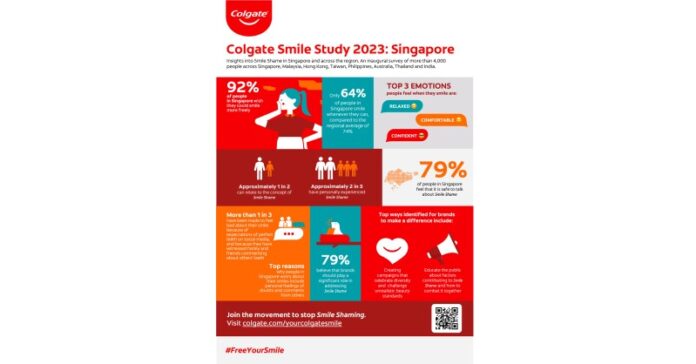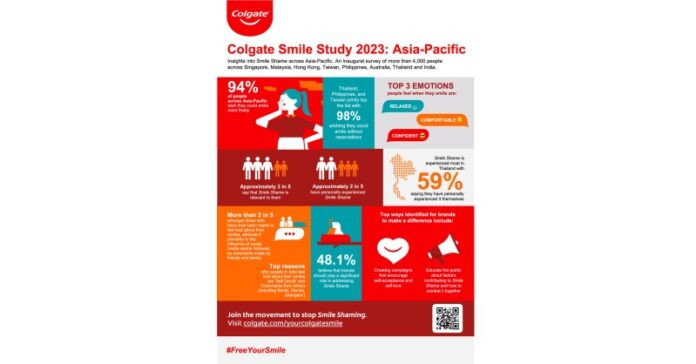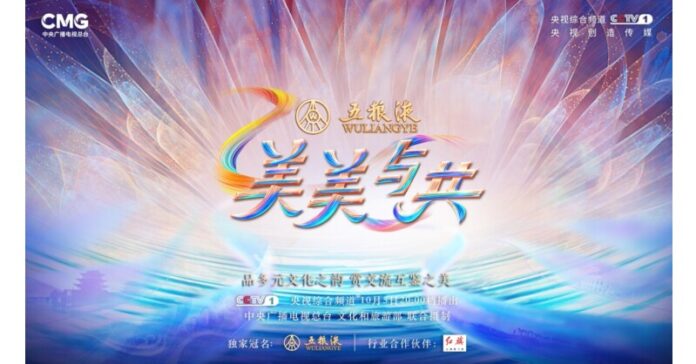HONG KONG SAR – Media OutReach – 6 October 2023 – With support from the “Mega Arts and Cultural Event Fund,” INK ASIA returns to the public eye this autumn after a three-year hiatus. As the pioneering art fair dedicated to ink art, INK ASIA 2023 will present the city with a world-renowned initiative that celebrates niche and exquisite ink art. The event will feature a series of captivating exhibitions, public installations, ink art events, and educational activities, taking viewers on a journey through the evolution of ink art from its ancient roots to its contemporary expressions. INK ASIA 2023 will be held at the Hong Kong Convention and Exhibition Centre from Thursday 5 October to Sunday 8 October 2023, with a VIP Preview on Wednesday, 4 October 2023.

About INK ASIA
INK ASIA, the first-ever art fair specialising in ink art, was successfully inaugurated in 2015. INK ASIA aims to promote ink art at an international level through an art fair platform. The fair presents galleries and artists from Hong Kong and other Asian countries, featuring ink works in a wide variety of different forms. INK ASIA explores the limitless possibilities of ink art and fosters a dialogue between traditional aesthetics and contemporary interpretations of ink, with the goal of promoting this traditional ink art to an international audience in an innovative way, particularly among young viewers.
Highlight Galleries
To celebrate the return of INK ASIA, participating galleries from different regions will proudly present works by a number of ink art masters and well-known contemporary artists, interpreting ink art in a brand new way.
Participating galleries from Hong Kong are showcasing a strong line-up, including Kwai Fung Hin Art Gallery, which features works by ink masters Li Huayi and Pan Gongkai, as well as contemporary ceramic artist Bai Ming; Hanart TZ Gallery presents works by renowned contemporary calligrapher Wang Dongling; Grotto Fine Art features works by several local artists, such as Hung Hoi, Yau Wing Fung, Wai Pong Yu, and Shum Kwan Yi; Alisan Fine Arts showcases works by prominent artists including Irene Chou and Lui Shou-Kwan; and Chelesa Art Co. Ltd. presents works by artists who are highly sought-after, such as Ren Zhong and Stewart Wong.
Galleries from other regions are also presenting an impressive line-up, including Beijing galleries No.55 Art Space, which features works by ink master Shen Qin; TAIHE ART GALLERY featuring large-scale ink works by Bei Dao; Yunmiao Art Center, White Art, and Yi.Project are each presenting solo exhibitions by three artists. These exhibitions include works by esteemed artist Zhao Lengyue, as well as young artists Li Na and Wu Huaheng. Shenzhen gallery Bamboo Space presents an exhibition commemorating the 125th birth anniversary of Feng Zikai which showcases artworks and letters from the three generations of the Feng family. Macau gallery Lotus Art exhibits works by ink masters Zhang Zikang and Feng Zhongyun. Additionally, two of the most important galleries from Taipei, Xi Zhi Tang Gallery and CHINI Gallery, are bringing works by several notable Asian contemporary artists, including Wu Chi-To, Chen Chien-Fa, Teng Pu-Chun, and Lee Kuang-Yu.
*Please refer to the appendix for all highlighted pieces of INK ASIA 2023
The Diversification of Ink Art
Artificial Intelligence (AI) has rapidly emerged as a transformative force, bringing unlimited opportunities for the future development of art. In recent years, integrating technology with art has become an inevitable trend to enhance viewers’ experience. Immersive Ink Art Experience Corner and metaverse project via The Sandbox enable students to understand Ink Art through diversification of Ink Art, fostering an engaging and interactive learning experience. INK ASIA 2023 will reinterpret contemporary ink art through innovative technology and new media by featuring six diverse special exhibitions, six large-scale installation artworks, and an ink workshop, providing viewers with a brand-new visual experience.
Special Exhibition: “Ink Asia 2023 Immersive Ink Art Experience Corner”
Collaboratively created by Sine Motion – Steven Ng and Flamesquads. The immersive ink art space not only provides viewers with an immersive experience but also offers an innovative way of exhibition. There are two experiences at this corner: The Eight Principles of the Character “Yong”: Audiences can learn about the fundamentals of calligraphy by using motion capture technology. “The Splendor of Ink”: Combining traditional ink art elements with LED technology, bringing audiences into ink art paintings that span more than a millennium.
Special Exhibition: “INK ASIA 2023 metaverse project via The Sandbox”
By bringing traditional ink painting into the metaverse, players can immerse themselves in the breathtaking scenery of ink paintings. Additionally, the exhibition area offers mini puzzles, artworks, and historical topics for everyone to appreciate and learn from, presenting ink art in an intriguing and engaging way.
Special Exhibition: “Ink+: Light Play”
To encourage innovation in ink art and expand artistic horizons, INK ASIA 2023 will once again showcase the “Ink +” project. The exhibition invites nine artists from mainland China, Hong Kong, and Macau to present alternative ink artworks. These artworks utilise non-traditional ink art mediums, including video, new media, dynamic installations, and AI technology, resulting in a refreshing contemporary ink art experience. Curated by the experienced curator Eric Leung, the exhibition titled “Light Play” conveys the concept of ink wash through the use of light and shadow effects, offering the audience a unique and alternative ink art experience.
Special Exhibition: “A Tribute to Chu Hing Wah”
The Ink Society will present the special exhibition, “A Tribute to Chu Hing Wah” at INK ASIA 2023. It marks the seventh instalment of the Ink Society’s “Tribute” series, which celebrates the art and legacies of master ink painters. Now in his 80s, Chu Hing Wah is one of Hong Kong’s most original artists, recognised for his evocative ink paintings of human figures and depictions of life in the city.
Special Exhibition: “Unknown Mountains and Rivers”
Curated by Grace Cheng, artist Seth Hon deviates from traditional ink and brush portrayals and instead focuses on presenting data from various perspectives and dimensions through different media. By studying the patterns of various minerals, the Generative Adversarial Network (GAN) generates stones with diverse colors and patterns. After exploring the potential of natural hues, the stones transition into flowing ink, ultimately forming a landscape of mountains and rivers.
Special Exhibition: “Ink Smile”
Presented by artist Hong Ko, “Blinkeyes” is an art series he has been working on. The iconic star-eyes smiley is an eye-catching emoji through which he expresses the spirit of times. The plush spheres of different sizes, like totems, or some kind of creatures, are the three-dimensional interpretation of the transformation between the brush and ink. Spheres, like cells dividing and converging, symbolise the tiniest and grandest imaginations.
Workshop: CopyINK Cat by project CAT COPY CAT
Hong Kong-based digital artist Kevin Ng seamlessly combines contemporary technology with urban motifs, building upon the expressive marks and essence of ink art. His work explores the convergence of technology and art, innovation and tradition, while delving into the mysteries of the night and the depths of a cat’s soul. From an animal’s perspective, it questions what imbues the creative spirit and life with meaning. By capturing the cat’s nocturnal moments and reimagining them through unique displays enhanced with digital art, the exhibition harmoniously merges technology and art. Moreover, it sheds light on the creative processes that breathe life into our artistic endeavors. The workshop welcomes participants of all painting backgrounds, offering them the opportunity to create distinctive works under the guidance of the artist.
Large-scale Ink Art Installations
INK ASIA 2023 will present six large-scale public art installations at the venue, including works by well-known artists Xu Longsen, Wang Dongling, Liao Jianhua, Lee Kuang-Yu, Kan Tai Keung and Danny Lee Chi Fai; an album by traditional Chinese ink painting master Shi Lu will also be presented at the same venue.
Academic Programme
INK ASIA 2023 is grateful to have The Ink Society as the Education Partner, hosting the Academic Programme at the fair by inviting experts from different fields. The line-up of speakers is impressive, including Cai Heng, the Senior Curator from the National Gallery Singapore; Luk Yuping, the Curator of Chinese Paintings, Prints, and Central Asian Collections at the British Museum; Professor Zhang Zikang, Director of Central Academy of Fine Arts Art Museum; Dr Susan L. Beningson, Independent Curator; and Professor Huang Zhiyang, Dean of the College of Humanities and Arts at Huafan University in Taiwan. These esteemed experts will share their valuable insights with the audiences during INK ASIA 2023.
Fair Sponsors
INK ASIA 2023 is sponsored by LG Electronics which provides top-quality OLED TV and display screens throughout the fair area. Additionally, the fair is also sponsored by The Macallan, one of the world’s leading single malt whiskies.
Ink Art Programmes in the City 2023
In addition to all the exciting exhibitions at the fair venue, the outdoor installations and exhibitions of INK ASIA 2023 will continue until the end of the year across various locations in Hong Kong, with the aim of promoting new ink art to the general public. Several exhibitions will take place at prominent venues such as Hysan Place in Causeway Bay, the public space of Star Ferry Pier in Central, the courtyard and outdoor areas of Asia Society Hong Kong Centre, the Hong Kong Arts Centre, and various art galleries in the city. Further details to be announced.
Dates & Times
Wednesday, 4 October 2023
2 – 9pm Preview (by invitation only)
Thursday, 5 October – Saturday, 7 October 2023
11am – 7pm Open to public
Sunday, 8 October 2023
11am – 6pm Open to public
Venue
Hall 3E, Hong Kong Convention and Exhibition Centre
Hashtag: #fineartasia #fineartasia2023 #inkasia #inkasia2023 #ArtsinHongKong
![]() https://www.facebook.com/inkasiahk
https://www.facebook.com/inkasiahk![]() https://www.instagram.com/ink_asia/
https://www.instagram.com/ink_asia/
The issuer is solely responsible for the content of this announcement.
Fair Organiser
Art and Antique International Fair Ltd (AAIF) is the pioneer of art fairs in Hong Kong. Founded in 2006 by well-known antique Chinese furniture dealer, Andy Hei, providing a vibrant new platform for the art world in Asia and worldwide. The inaugural edition of Fine Art Asia was the first international art fair in Hong Kong in more than a decade.
AAIF has successfully organised 22 fairs in Hong Kong to date. Fine Art Asia is recognised worldwide as a home-grown, Hong Kong-based art enterprise, which has gained a reputation for quality and value in the international art world. Ink Asia was inaugurated in 2015 and has quickly been acclaimed as the only international fair devoted to modern and contemporary ink art.
This content was prepared by Media OutReach. The opinions expressed in this article are the author's own and do not reflect the view of Siam News Network.

